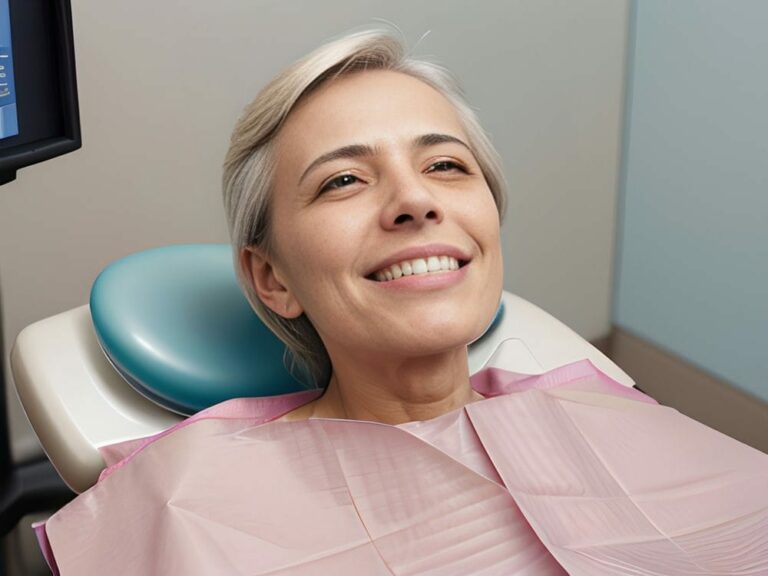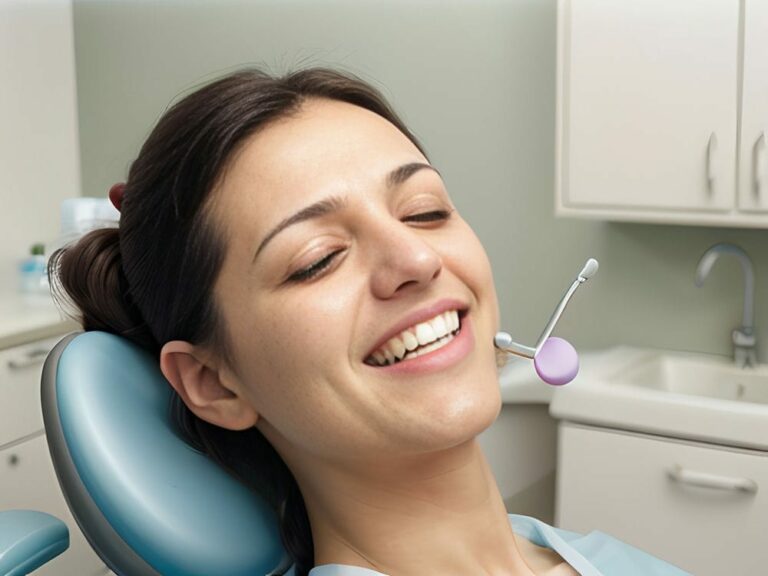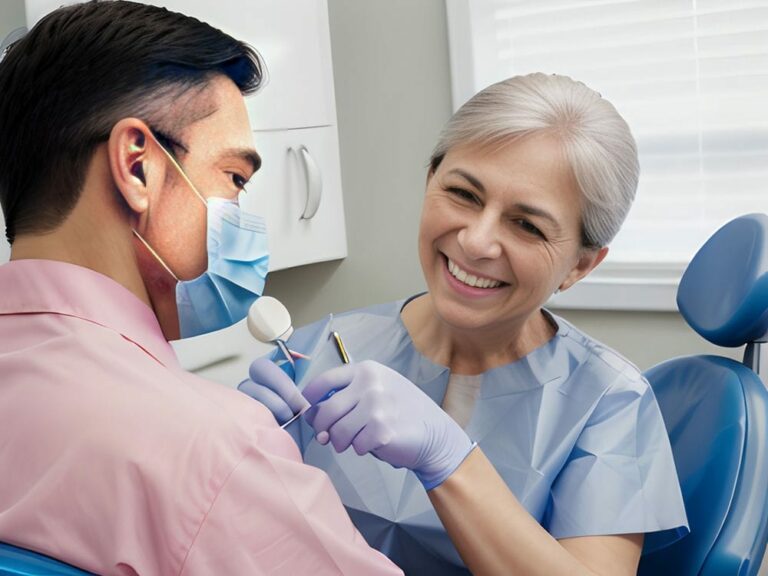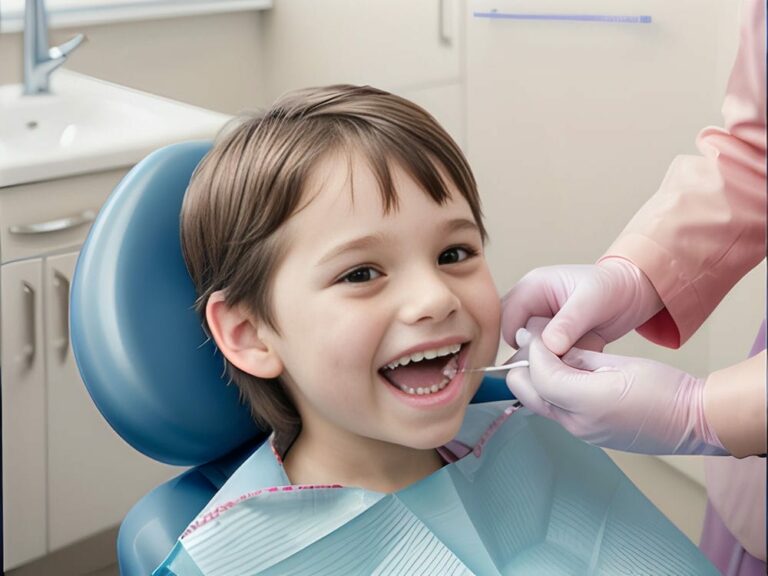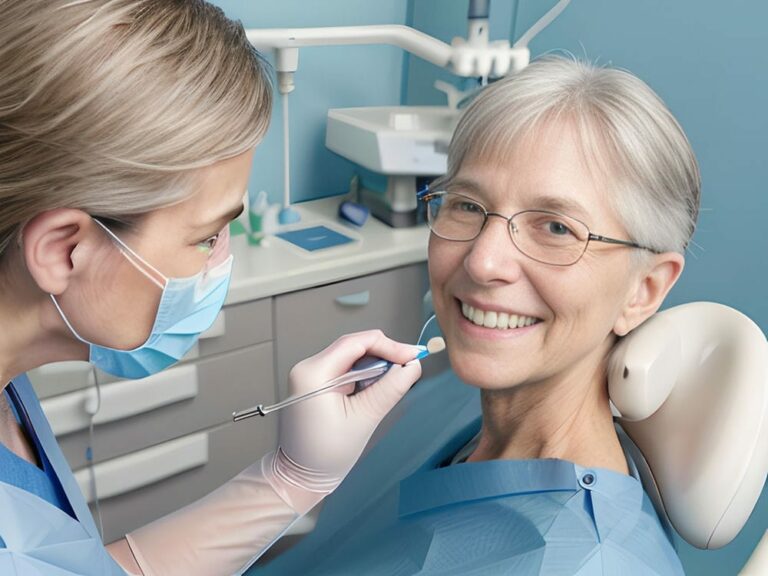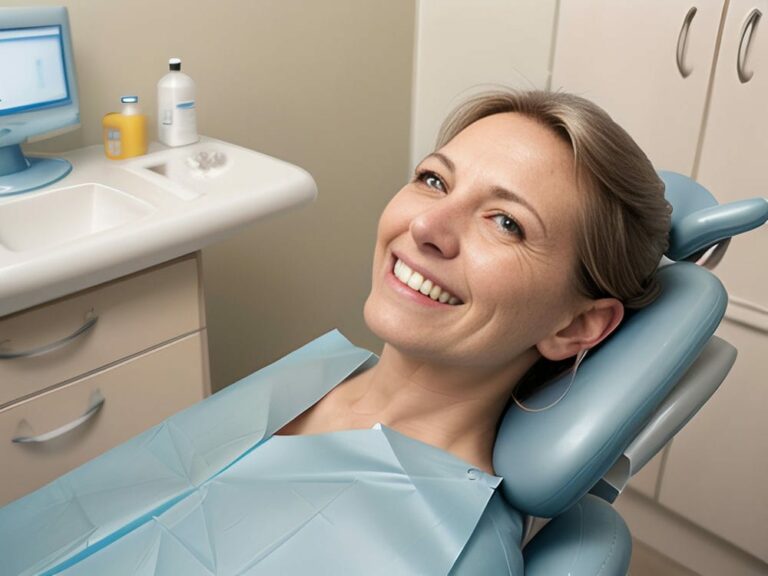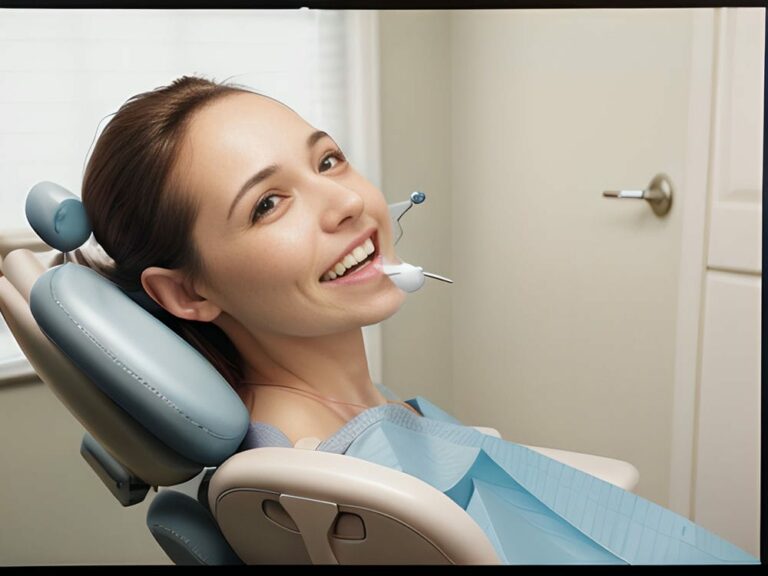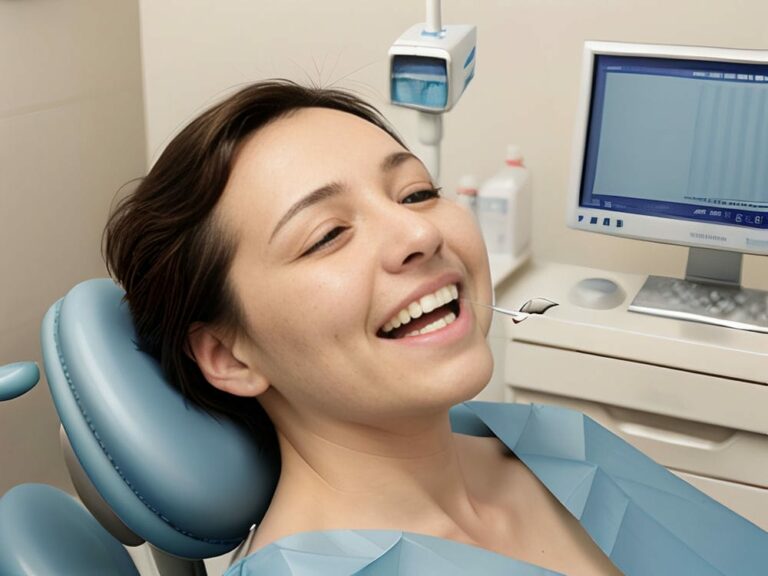The Benefits of Eco-Friendly Materials in Modern Dental Care
The Benefits of Eco-Friendly Materials in Modern Dental Care
In recent years, there has been a growing emphasis on sustainability and eco-consciousness in various industries, including dentistry. As a result, many dental professionals are now turning to eco-friendly materials for their practices. These materials offer numerous benefits not only for the environment but also for the patients and practitioners themselves.
One of the key advantages of using eco-friendly materials in modern dental care is the reduced environmental impact. Traditional dental materials, such as amalgam fillings or plastic-based products, can have detrimental effects on the environment due to their non-biodegradable nature and potential release of harmful chemicals. In contrast, eco-friendly materials are often made from sustainable sources and are designed to be biodegradable or easily recyclable. By incorporating these materials into dental procedures, practitioners can help minimize waste generation and reduce their carbon footprint.
Moreover, eco-friendly materials promote better oral health outcomes for patients. For instance, composite resin fillings, which are commonly used as an alternative to amalgam fillings, offer several benefits. They provide a more aesthetically pleasing appearance since they can be color-matched to natural teeth. Additionally, composite resins require less removal of healthy tooth structure compared to amalgam fillings. This preservation of healthy tooth structure helps maintain overall oral health and reduces the risk of future complications.
Lastly, using eco-friendly materials can improve the working environment for dental professionals. Many traditional dental materials contain toxic substances that may pose health risks for both patients and practitioners during use or disposal. By opting for eco-friendly alternatives that do not involve harmful chemicals or emit toxic fumes, dental professionals can create a safer workplace for themselves and their patients.
In conclusion, the use of eco-friendly materials in modern dental care offers several advantages over traditional options. Not only do these materials contribute to reducing environmental impact by being sustainable and biodegradable, but they also provide better oral health outcomes for patients and create a safer working environment for dental professionals. As the dental industry continues to prioritize sustainability, the adoption of eco-friendly materials will undoubtedly become more widespread in the years to come.
Exploring Sustainable Options for Dental Care
In recent years, there has been a growing emphasis on sustainability and eco-consciousness in various industries, including dentistry. Many dental professionals are now turning to eco-friendly materials for their practices due to the numerous benefits they offer. These materials not only have a reduced environmental impact but also promote better oral health outcomes for patients and create a safer working environment for dental professionals.
One of the key advantages of using eco-friendly materials in modern dental care is the reduced environmental impact. Traditional dental materials, such as amalgam fillings or plastic-based products, can have detrimental effects on the environment due to their non-biodegradable nature and potential release of harmful chemicals. In contrast, eco-friendly materials are often made from sustainable sources and designed to be biodegradable or easily recyclable. By incorporating these materials into dental procedures, practitioners can help minimize waste generation and reduce their carbon footprint.
Moreover, eco-friendly materials promote better oral health outcomes for patients. For instance, composite resin fillings, which are commonly used as an alternative to amalgam fillings, offer several benefits. They provide a more aesthetically pleasing appearance since they can be color-matched to natural teeth. Additionally, composite resins require less removal of healthy tooth structure compared to amalgam fillings. This preservation of healthy tooth structure helps maintain overall oral health and reduces the risk of future complications.
Using eco-friendly materials improves the working environment for dental professionals by eliminating toxic substances that may pose health risks. Many traditional dental materials contain harmful chemicals or emit toxic fumes during use or disposal. By opting for eco-friendly alternatives that do not involve these substances, dental professionals can create a safer workplace for themselves and their patients.
In conclusion, the use of eco-friendly materials in modern dental care offers several advantages over traditional options. These materials contribute to reducing environmental impact by being sustainable and biodegradable while providing better oral health outcomes for patients and creating a safer working environment for dental professionals. As the dental industry continues to prioritize sustainability, the adoption of eco-friendly materials will undoubtedly become more widespread in the years to come.
Understanding the Importance of Environmentally Friendly Dentistry
Understanding the Importance of Environmentally Friendly Dentistry
In today’s world, the importance of sustainability and eco-consciousness cannot be overstated. This holds true for every industry, including dentistry. Dental professionals are increasingly recognizing the significance of using environmentally friendly materials in their practices. These materials offer numerous benefits, ranging from reduced environmental impact to improved oral health outcomes for patients.
When it comes to dental care, traditional materials can have a negative impact on the environment. For example, amalgam fillings and plastic-based products are non-biodegradable and can release harmful chemicals into the environment. In contrast, eco-friendly materials are often made from sustainable sources and designed to be biodegradable or recyclable. By incorporating these materials into dental procedures, practitioners can minimize waste generation and reduce their carbon footprint.
Not only do eco-friendly materials benefit the environment, but they also lead to better oral health outcomes for patients. Take composite resin fillings as an example. These fillings offer several advantages over amalgam fillings. They can be color-matched to natural teeth, providing a more aesthetically pleasing appearance. Additionally, composite resins require less removal of healthy tooth structure compared to amalgam fillings, preserving overall oral health and reducing the risk of future complications.
By opting for eco-friendly materials in dental practices, dental professionals also improve their working environment by eliminating toxic substances that may pose health risks. Many traditional dental materials contain harmful chemicals or emit toxic fumes during use or disposal. Choosing eco-friendly alternatives that do not involve these substances creates a safer workplace for dental professionals and their patients.
In summary, the use of eco-friendly materials in modern dental care is crucial due to its positive impact on both the environment and oral health outcomes. By prioritizing sustainability in dentistry and adopting environmentally friendly materials, practitioners contribute to reducing waste generation and creating a safer working environment while promoting better oral health for their patients. As this awareness continues to grow, the adoption of eco-friendly materials in dental practices will undoubtedly become more widespread.
Biodegradable and Natural Materials for Eco-Conscious Dental Practices
Biodegradable and Natural Materials for Eco-Conscious Dental Practices
When it comes to eco-conscious dental practices, using biodegradable and natural materials is key. These materials offer a sustainable alternative to traditional dental products and reduce the environmental impact of dental procedures.
One example of a biodegradable material commonly used in dentistry is bio-based polymers. These polymers are derived from renewable sources such as plants or microbes, making them more sustainable than their petroleum-based counterparts. Bio-based polymers can be used in various dental applications, including impression materials, temporary crowns, and even orthodontic appliances. By incorporating these biodegradable materials into their practices, dental professionals can minimize waste generation and contribute to a healthier planet.
Another eco-friendly material gaining popularity in dentistry is glass ionomer cement (GIC). GIC is a natural material made from a mixture of glass powder and organic acids. It has several advantages over traditional restorative materials like amalgam or composite resin. GIC releases fluoride ions that help prevent tooth decay, reducing the need for additional treatments in the future. Additionally, GIC bonds well with tooth structure, creating a strong seal that prevents bacteria from entering and causing further damage. By using GIC for restorations, dental professionals not only promote oral health but also reduce the use of non-biodegradable materials.
Incorporating biodegradable and natural materials into dental practices is an essential step towards environmentally friendly dentistry. By choosing these materials over traditional options, dental professionals can minimize waste generation, reduce their carbon footprint, and contribute to a healthier planet. Moreover, using biodegradable and natural materials often results in better oral health outcomes for patients due to their inherent properties such as fluoride release or improved bonding capabilities. As the demand for sustainable alternatives grows, the use of biodegradable and natural materials will become increasingly prevalent in modern dental care.
Embracing Green Dentistry: Organic and Eco-Friendly Alternatives
The next step towards eco-conscious dental practices is embracing organic and eco-friendly alternatives. These alternatives prioritize sustainability and minimize the use of harmful chemicals, making them safer for both patients and the environment.
One example of an organic alternative is using natural toothpaste made from plant-based ingredients. Traditional toothpaste often contains synthetic chemicals like triclosan or sodium lauryl sulfate, which can be harmful to aquatic life when they enter water systems. Organic toothpaste, on the other hand, uses natural ingredients like baking soda, coconut oil, or essential oils for cleaning and freshening breath. By switching to organic toothpaste, dental professionals can promote oral health without compromising environmental well-being.
Another eco-friendly alternative is using digital radiography instead of traditional film-based X-rays. Digital radiography eliminates the need for toxic developing chemicals used in film processing and reduces radiation exposure for patients. This technology also allows for easy storage and sharing of digital images, minimizing paper waste. By embracing digital radiography, dental practices can provide high-quality diagnostic imaging while reducing their environmental impact.
By embracing green dentistry practices like using organic toothpaste and digital radiography, dental professionals can take further steps towards sustainability in their practice. These alternatives not only minimize harm to the environment but also contribute to better overall health outcomes for patients. As the demand for eco-friendly options continues to rise, it is crucial for dental professionals to stay informed about these alternatives and make conscious choices that benefit both their patients and the planet.
Next Section H2: The Role of Eco-Friendly Packaging in Dental Care
Incorporating Renewable Resources in Sustainable Dentistry
Incorporating Renewable Resources in Sustainable Dentistry
As the world becomes more aware of the environmental impact of various industries, including healthcare, dental professionals are seeking ways to incorporate renewable resources in their practices. By utilizing sustainable materials and techniques, dentists can reduce their carbon footprint and promote eco-conscious dental care.
One way to embrace renewable resources is by using biodegradable dental materials. Traditional dental materials like amalgam fillings contain mercury, which can be harmful to both patients and the environment when disposed of improperly. By opting for biodegradable alternatives such as resin-based composite fillings, dental professionals can provide effective treatment while minimizing their impact on the planet.
Additionally, incorporating renewable energy sources into dental practices can further enhance sustainability efforts. Installing solar panels or utilizing wind energy can help offset the electricity consumption of a dental office. This not only reduces reliance on fossil fuels but also helps lower energy costs in the long run.
By embracing renewable resources and sustainable techniques, dental professionals can play a crucial role in promoting eco-friendly practices within the healthcare industry. As technology advances and more environmentally friendly options become available, it is important for dentists to stay informed and make conscious choices that prioritize both patient health and environmental well-being. Together, these efforts contribute to a greener future for modern dentistry.
Discovering Eco-Friendly Products for Holistic Dental Care
The incorporation of renewable resources in dental care extends beyond materials and techniques. Dental professionals can also embrace eco-friendly products for holistic dental care. From toothbrushes to mouthwashes, there are now numerous sustainable options available that prioritize both oral health and environmental well-being.
One example of an eco-friendly product is a bamboo toothbrush. Unlike traditional plastic toothbrushes that take hundreds of years to decompose, bamboo toothbrushes are biodegradable and compostable. They offer the same level of effectiveness in cleaning teeth while reducing plastic waste.
Another sustainable option is natural or organic toothpaste. Conventional toothpaste often contains chemicals and synthetic ingredients that can be harmful to both our bodies and the environment. By choosing natural or organic alternatives, dental professionals can provide their patients with a safer and more sustainable option for maintaining oral health.
In addition to these products, there are also eco-friendly floss options available. Traditional floss is typically made from nylon, which is not biodegradable and contributes to plastic pollution. Eco-friendly floss, on the other hand, is made from materials like silk or bamboo fiber, which are biodegradable and more environmentally friendly.
By incorporating these eco-friendly products into their practices, dental professionals can further reduce their impact on the planet while still providing high-quality dental care to their patients. It is important for dentists to stay informed about the latest advancements in sustainable dentistry and make conscious choices that align with their commitment to environmental well-being. Together, these efforts contribute to a greener future for the dental industry and promote holistic oral health for all.
Implementing Green Practices in the Dental Office
With the increasing awareness of environmental issues, many dental professionals are now looking for ways to implement green practices in their offices. By adopting eco-friendly measures, dental offices can significantly reduce their carbon footprint and contribute to a more sustainable future.
One way to start implementing green practices is by reducing waste. Dental offices generate a significant amount of waste, including disposable items such as gloves, masks, and packaging materials. By choosing reusable or recyclable alternatives and implementing proper waste management systems, dental professionals can minimize the amount of waste that ends up in landfills.
Another important aspect of green dentistry is conserving water and energy. Dental equipment like autoclaves and dental chairs consume a significant amount of energy. By investing in energy-efficient equipment and practicing responsible water usage, dental professionals can reduce their overall energy consumption and lessen their impact on the environment.
Furthermore, dental offices can also promote sustainability by encouraging paperless operations. With advancements in technology, many office tasks such as record-keeping and appointment scheduling can now be done digitally. By embracing electronic health records and digital communication platforms, dental professionals can significantly reduce paper usage and save trees.
By incorporating these eco-friendly practices into their daily operations, dental professionals can contribute to a greener future while still providing high-quality care to their patients. It is crucial for dental offices to prioritize sustainability and continuously seek ways to improve their environmental performance. Together, these efforts will help create a more sustainable dental industry that prioritizes both oral health and the well-being of our planet.
Promoting Environmental Consciousness through Natural Dental Care
Promoting Environmental Consciousness through Natural Dental Care
In recent years, there has been a growing interest in natural dental care as people become more conscious of the impact of traditional dental products and procedures on the environment. Natural dental care focuses on using eco-friendly materials and practices that are not only good for oral health but also sustainable for the planet.
One way to promote environmental consciousness in dental care is by using biodegradable or compostable dental products. Traditional toothbrushes, made of plastic, contribute to the global plastic waste problem. By opting for toothbrushes made from bamboo or other sustainable materials, dental professionals can help reduce plastic pollution and promote a more eco-friendly approach.
Another aspect of natural dental care is the use of non-toxic and chemical-free oral care products. Many traditional toothpastes and mouthwashes contain harmful chemicals that can have adverse effects on both human health and the environment. By choosing natural alternatives that are free from artificial ingredients, dyes, and preservatives, dental professionals can provide safer options for their patients while also minimizing their impact on the ecosystem.
In addition to using eco-friendly materials, promoting natural dental care involves educating patients about sustainable practices. Dental professionals can raise awareness about water conservation during brushing and flossing, encourage proper disposal of dental waste, and emphasize the importance of regular preventive care to reduce the need for invasive procedures. By empowering patients with knowledge and promoting sustainable habits, dental offices can play a crucial role in creating a greener future.
By embracing natural dental care practices, dental professionals can contribute to a more sustainable future while still providing excellent oral health services. It is essential to prioritize environmental consciousness in dentistry and continually seek innovative ways to minimize our ecological footprint. Together, we can create a healthier planet while maintaining healthy smiles for generations to come.
Advancements in Eco-Friendly Dental Technology and Innovations
Advancements in Eco-Friendly Dental Technology and Innovations
With the increasing demand for eco-friendly dental care, there have been significant advancements in technology and innovations that promote sustainability in the field. One such innovation is the development of biodegradable dental materials. Traditional fillings and crowns often contain non-biodegradable materials such as mercury or plastic, which can be harmful to both patients and the environment. However, new biodegradable alternatives made from natural substances like glass ionomer cement or composite resins are becoming more widely available. These materials not only provide effective restorations but also break down naturally over time, reducing waste and minimizing environmental impact.
Another area of advancement is in digital dentistry, which offers several environmental benefits. Digital imaging systems, such as cone beam computed tomography (CBCT), use significantly less radiation than traditional X-rays, making them safer for both patients and staff. Additionally, digital impressions eliminate the need for disposable impression material and trays, reducing waste generated during procedures. Furthermore, 3D printing technology allows for precise fabrication of dental appliances like aligners or retainers using fewer materials than traditional methods. This reduction in material consumption contributes to a more sustainable approach to dental care.
The integration of renewable energy sources into dental practices is another exciting innovation in eco-friendly dentistry. Solar panels can be installed on the roofs of dental offices to generate clean energy, reducing reliance on fossil fuels and decreasing carbon emissions. This not only helps combat climate change but also saves costs on electricity bills in the long run. By harnessing renewable energy, dental professionals can create a greener practice while still providing excellent care to their patients.
As dentistry continues to evolve, it is crucial for practitioners to stay updated with the latest advancements in eco-friendly technology and innovations. By embracing these changes, dental professionals can contribute to a more sustainable future while providing high-quality oral health services that prioritize both patient well-being and environmental consciousness. Together, we can continue to make strides towards a greener dental industry and a healthier planet for future generations.
FAQs
Q: What are eco-friendly materials in modern dental care?,
A: Eco-friendly materials in modern dental care are those that have a reduced impact on the environment compared to traditional materials.,
Q: Why is it important to use eco-friendly materials in dental care?,
A: It is important to use eco-friendly materials in dental care to minimize the negative impact on the environment and promote sustainable practices.,
Q: What are some examples of eco-friendly materials used in dental care?,
A: Examples of eco-friendly materials used in dental care include biodegradable toothbrushes, compostable dental floss, and recyclable packaging.,
Q: How do eco-friendly materials benefit patients?,
A: Eco-friendly materials can benefit patients by reducing their exposure to potentially harmful chemicals and promoting overall health and well-being.,
Q: Are eco-friendly dental materials as effective as traditional materials?,
A: Yes, eco-friendly dental materials are just as effective as traditional materials in terms of their performance and functionality.,
Q: Can eco-friendly dental materials be used for all types of dental treatments?,
A: Yes, eco-friendly dental materials can be used for a wide range of dental treatments, including fillings, crowns, and prosthetics.,
Q: Are eco-friendly dental materials more expensive than traditional materials?,
A: In some cases, eco-friendly dental materials may be slightly more expensive than traditional materials due to their sustainable production processes.,
Q: How can dental practices incorporate eco-friendly materials into their operations?,
A: Dental practices can incorporate eco-friendly materials by sourcing products from sustainable suppliers, implementing recycling programs, and reducing waste generation.,
Q: Are there any regulations or certifications for eco-friendly dental materials?,
A: Yes, there are certifications such as the Forest Stewardship Council (FSC) and the Green Seal that ensure the eco-friendliness of dental materials.,
Q: What are some future trends in eco-friendly materials for dental care?,
A: Some future trends in eco-friendly materials for dental care include the development of biodegradable dental implants and the use of 3D printing technology for sustainable dental prosthetics.









